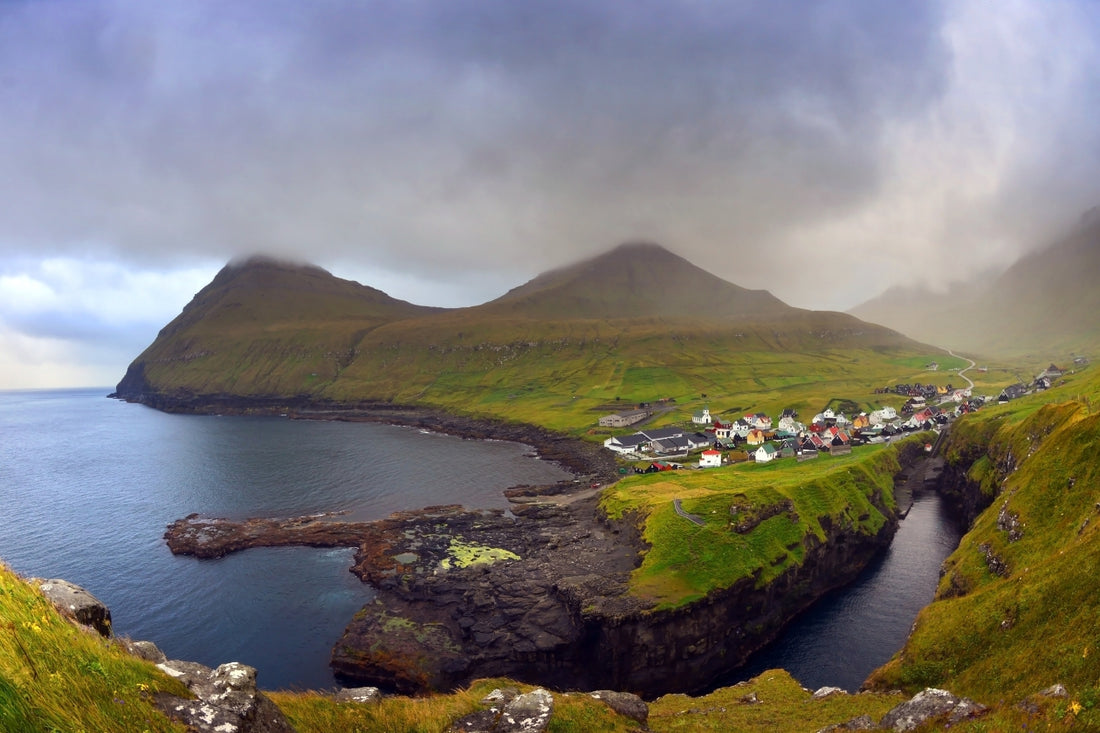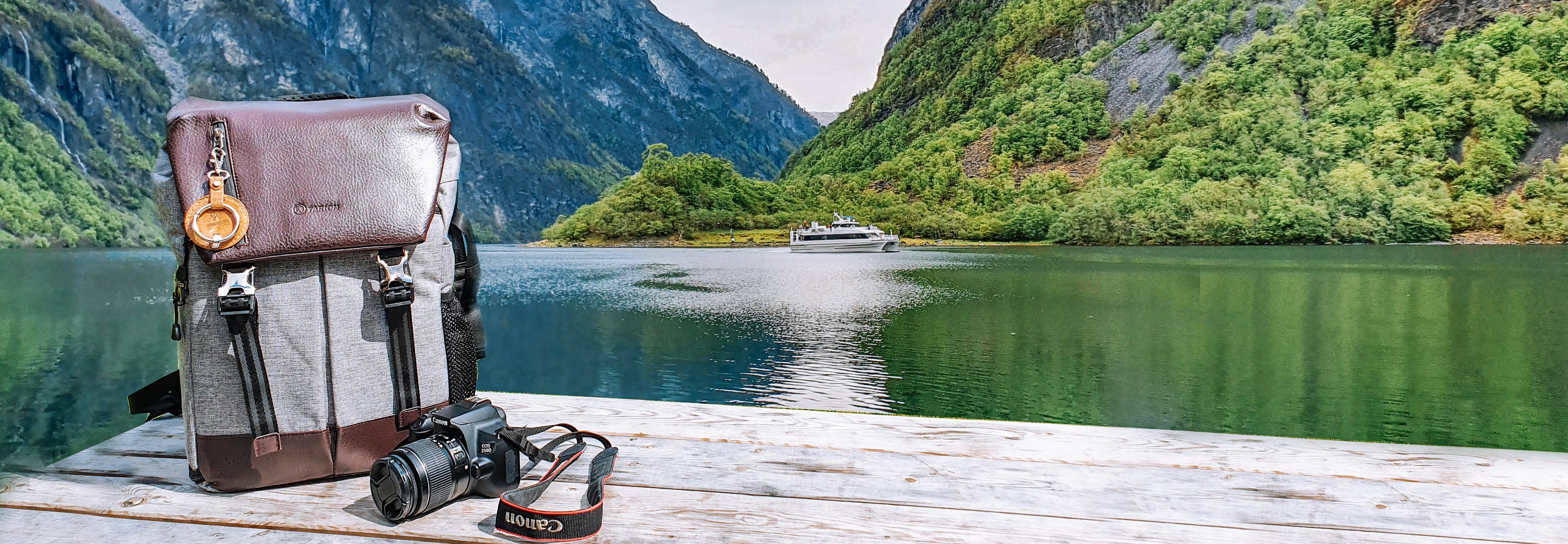
Faroe Islands - all you need to prepare the perfect trip
Share
Welcome to the enchanting world of the Faroe Islands, a cluster of islands where the charm of Nordic traditions meets breath-taking natural beauty.
This guide is designed to offer you essential practical information, ensuring a seamless and enjoyable experience on these remote, windswept isles.
From navigating the logistics of arrival by air, land, or sea, to understanding the local customs, currency, and communication facilities, we've got you covered.
Whether you're planning your travel itinerary, wondering about the best time to visit, or seeking insights into the family-friendly aspects of Faroese life, our comprehensive overview aims to equip you with all the necessary details.
So pack your bags, and get ready to embark on an unforgettable journey to a destination where myths intertwine with reality, and sustainability is as much a way of life as it is a commitment to the future.

Recent History
The Faroe Islands, an archipelago under the sovereignty of the Kingdom of Denmark, have a rich history that's as fascinating as its landscapes. In recent times, these islands have seen a blend of traditional lifestyles with modern advancements, striking a unique balance that captivates visitors.
Culture and Traditions
Faroe Islands' culture is a tapestry of Norse and Celtic influences, evident in its music, dance, and folklore. The traditional Faroese chain dance, accompanied by ballads, is a must-see. The locals, known for their warm hospitality, also celebrate various festivals that reflect their rich heritage and connection to the sea.
Why Should You Visit?
If you're a fan of unspoiled nature, vibrant culture, and tranquility, the Faroe Islands are your go-to destination. From dramatic landscapes and cozy villages to the Northern Lights, this place offers a magical escape from the hustle and bustle of city life.
How Long to Stay
A week is ideal to immerse yourself in the Faroe Islands' serene beauty and explore its key attractions. However, if you're pressed for time, a 3-4 day trip can still cover the highlights.
How to Get There
- Flying: Regular flights connect the Faroe Islands to various European destinations.The main international airport in the Faroe Islands is Vágar Airport (IATA: FAE). It is the only airport in the Faroe Islands that serves international flights. Located on the island of Vágar, it connects the Faroe Islands with several international destinations, primarily in Europe. The airport is well-equipped to handle the influx of tourists and provides various services, including car rentals, to facilitate easy travel to other parts of the islands. Major airlines operating from Vágar Airport offer regular scheduled flights to and from destinations like Copenhagen, Reykjavik, and Edinburgh, among others.
- By Boat: The islands are connected to both Denmark and Iceland via regular ferry services. The most common route is from Hirtshals in Denmark to Tórshavn, the capital of the Faroe Islands, via the Smyril Line. This ferry service provides an opportunity to travel with a vehicle, making it a popular choice for those wishing to explore the islands at their own pace. Additionally, some cruise lines include the Faroe Islands as a destination on their North Atlantic itineraries. Traveling by boat to the Faroe Islands offers a unique and scenic journey, giving you a chance to experience the beauty of the North Atlantic Ocean.
Entry Conditions
Ensure you check the latest visa requirements and travel advisories. Entry conditions vary depending on your nationality and current travel policies.
Not sure if you need a Visa? Check it here |
Best Time to Visit
- Weather: Summer (June-August) is ideal for warmer weather and outdoor activities.
- Festivals: Plan your visit during traditional festivals for a unique cultural experience.
Useful Information
- Language: Faroese and Danish are the official languages, with English widely spoken.
- Currency: Danish Krone (DKK) is used.
- Bank Transactions: Credit cards are widely accepted, and ATMs are easily accessible.
- Type of Sockets: Standard European plug (Type F).
- Internet Access: Good connectivity in towns and hotels.

What to Pack
Pack layers for changing weather, a good pair of walking shoes, and rain gear. Don’t forget your camera to capture the stunning landscapes!
What's the Best Way to Visit?
A road trip is an excellent way to experience the Faroe Islands. The well-maintained roads and stunning scenic routes make driving a pleasure.
Is it a Family-Friendly Country?
Absolutely! With its safe and welcoming environment, the Faroe Islands are great for families. There are plenty of nature-based activities for children to enjoy.
What to Visit
Don’t miss the capital Tórshavn, the historical village of Gásadalur, and the breathtaking cliffs of Vágar.
What to Eat
Seafood is a staple here. Try the Faroese lamb and other local delicacies for an authentic culinary experience.
UNESCO Heritage
The Faroe Islands have several sites, including the dramatic landscapes of Kalsoy, submitted for UNESCO recognition.
Myths and Reality
The islands are shrouded in myths, from hidden people to sea monsters. While visiting, you'll discover the reality behind these captivating tales.
Sustainability
The Faroe Islands are committed to sustainable tourism, balancing environmental conservation with cultural preservation.
The Faroe Islands, a blend of mystery, beauty, and culture, await your discovery. Whether you're seeking adventure, relaxation, or cultural immersion, these islands offer an experience unlike any other.



